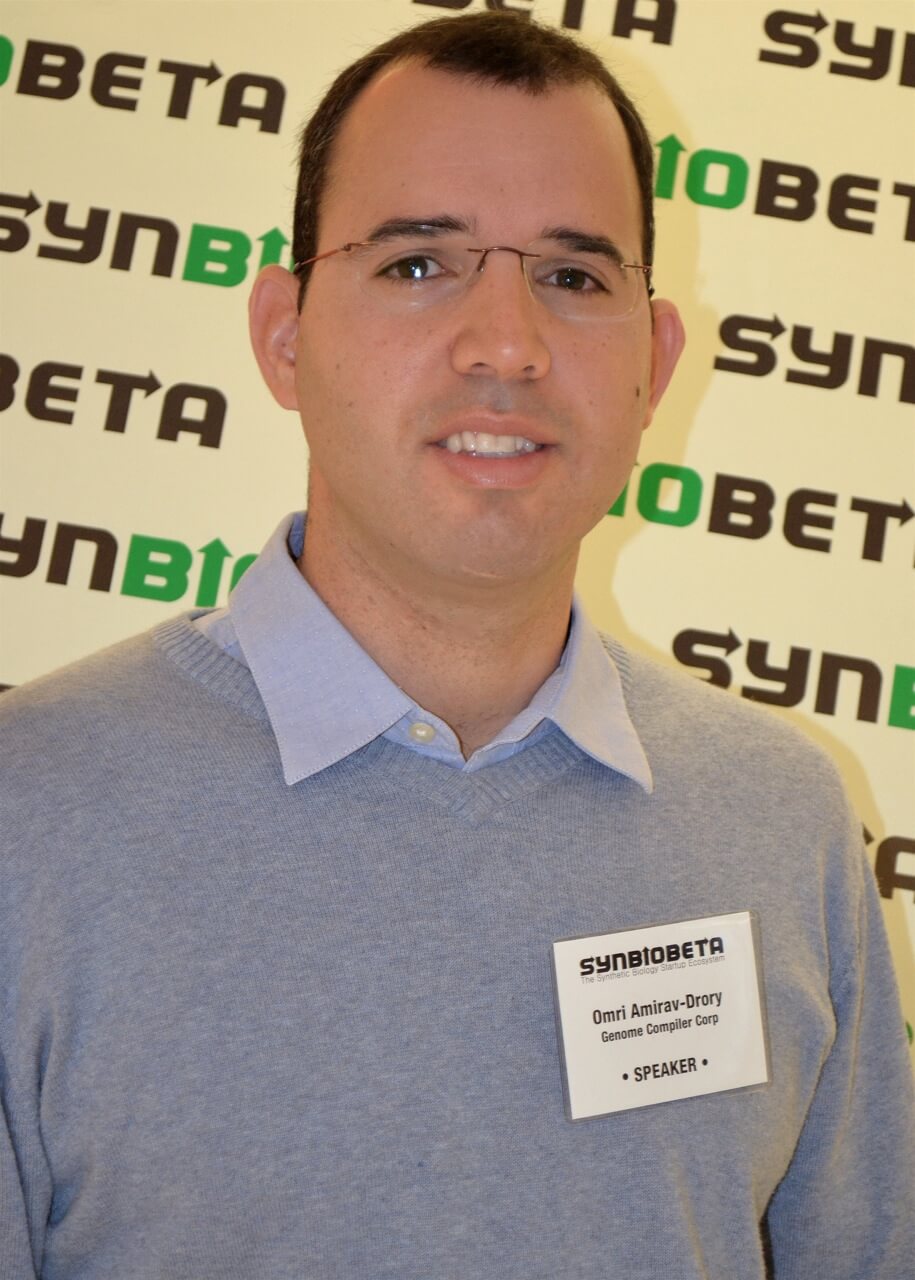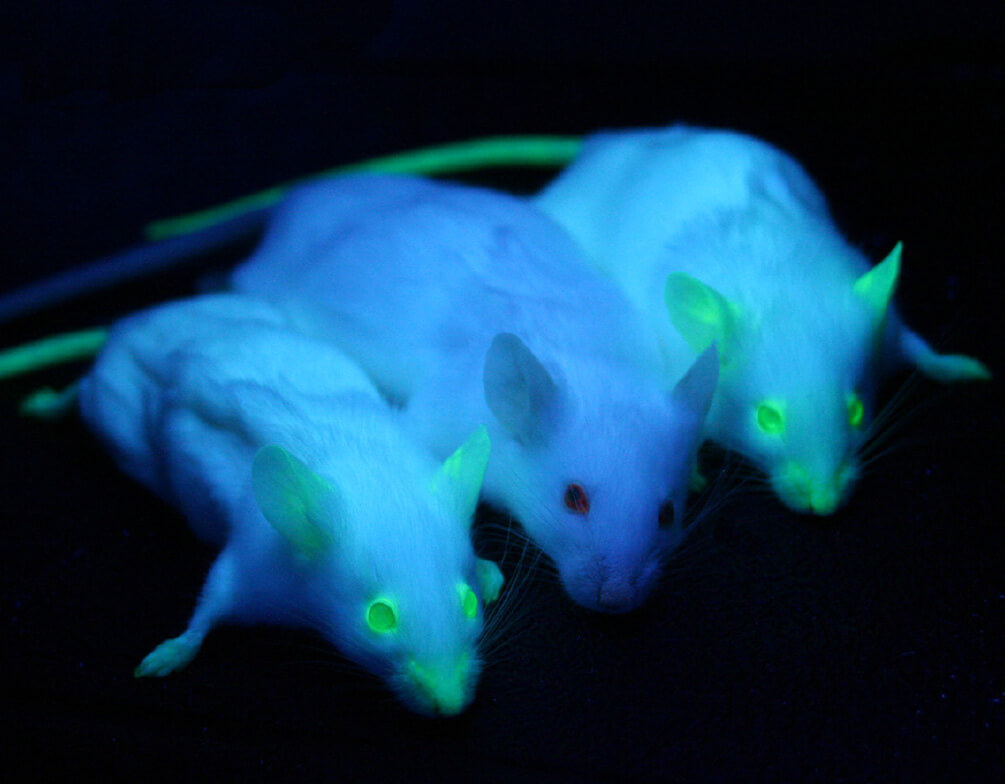The Gnom Compiler company from Tel Aviv is charting the way there. Published in the spotlight section - / Dorit Farnes

In 2003, James Watson, the Nobel laureate who discovered the structure of DNA with Francis Crick, was hosted by Monsanto, the US agricultural biotechnology giant. Many are afraid of Monsanto and its products, because the company develops genetically engineered plants to give them new traits such as resistance to pesticides, resistance to certain pests and higher yields. However, Watson, an enthusiastic supporter of the use of recombinant DNA, meaning DNA that was designed and produced in a laboratory and then inserted into any organism of our choice, said in a speech he gave to the workers: "Some claim that we are fulfilling the role of God. My answer is clear: 'Who but us can fill this role?'"
The first synthetic bacteria
Seven years later, in 2010, the question became even more acute when J. Craig Venter, and his team of researchers from the J. Craig Venter Institute (JCVI), created for the first time a synthetic bacterium, Mycoplasma laboratorium (literally: Mycoplasma "laboratory") [see "Tools for Life" ”, Scientific American Israel October-November 2010]. A simple operation? Absolutely not, and not cheap either. It is estimated that the project cost about 40 million dollars. Furthermore, the first version of M. labortorium failed to survive because it lacked one nucleotide in an essential gene of the bacterium. The error was corrected and the experiment was ultimately successful. This complex operation is therefore another milestone in our journey to synthetic life, to the ability to design and produce any DNA sequence we want, and then breathe life into it. The possibilities are many, as are the dangers, and the ethical questions.
Plan a genome for me
The Israeli start-up company, Genome Compiler Company (GCC), has recently joined this journey, which aims to design a user-friendly interface that will make it possible to easily and efficiently design any genome we want, no matter how large and complex it may be. GCC was founded by Omri Amirav-Drori, who holds a doctorate in biochemistry from Tel Aviv University, and partners. After his doctoral studies, Amirav-Drori went to post-doctoral training at Stanford University, where he caught the entrepreneurial bug and decided to start a company that would allow him to realize his biological vision. With the help of funding from the Singularity University and the Autodesk company, Amirav-Drori, he and three other partners: Yogev Debi, Roi Nebo, and Nir Ben Moshe (all originally from Intel) founded the GCC company. The motivation, says Amirav-Drori, is to "increase the output from the available resources. We live in a world whose energy sources are depleting, but living beings know how to use renewable sources, such as the sun and carbon dioxide." If we can harness these creatures to our advantage, by designing them as we wish, we can solve a significant part of the world's problems. Moreover, living things know how to reproduce on their own, so they only need to be prepared once.

However, as Amirav-Drori explains, in the field of genomics there is a missing link in the information processing chain. The genetic information is "written" with the help of the four DNA letters, A, G, C and T, which can be compared to the binary code of the computer. We know how to decode this code and look at its finished product, that is, the proteins that the various genes encode. But when we use a computer, we don't use machine language, i.e. strings of 0's and 1's, which will be very difficult to understand. Instead, the programmers use high-level programming languages, and software called a "compiler" translates them into code that the computer can understand. Geneticists, on the other hand, are still forced in many cases to use the genetic "source code", that is, the A, C, G and T sequences, and the lack of a genetic compiler, says Amirav-Drori, makes it very difficult to design new genomes or parts of genomes.
And this is where the Gnome Compiler company comes into the picture, whose name speaks for itself. With the help of the company's software, you can easily design a new genome, change it, transfer genes from one place to another, and eventually, when the project planning is completed, send an order to one of the companies currently operating in the market for DNA synthesis and receive the genome you designed ready and ready for use.
To start a new project using the Genome Compiler platform, genetic sequences of existing genomes must first be imported. The platform already includes a data library containing the sequences of several whole genomes, and also allows an easy and fast connection to all the large databases available today, from where you can download a DNA sequence and use it. The genome that you want to change can be edited at several levels. You can of course look at the basic DNA sequence, but you can also look at the array of different genes, the protein sequences, the function of the proteins and so on. If, for example, you want to insert a new gene, which contains code for an enzyme that was not there before, all you have to do is drag the symbol of the gene to the desired place in the genome diagram, and insert it there with one click of the mouse. The compiler will already take care of generating the instructions to insert the nucleotide sequence of the new gene into the correct place in the original DNA sequence. The interface developed by the GCC company is currently available free of charge to all users, and the beta version was published in March 2013.
Labs are needed for the general public
Of course, a considerable knowledge of biology is still required to use the software, says Amirav-Drori, but the ultimate goal is to bring about the "democratization of the process of biological creation", so in the future various functions will also be added to the software, such as warning of planning errors, if you try, for example, Design a creature that lacks an essential gene. Also, the software will provide a larger, more organized and more explained database of genetic data, as well as data on three-dimensional structures of proteins. Amirav-Drori and his partners plan to program in a sharing function that will allow the general public to review the information and make corrections and improvements to the product.
In this spirit, Amirav-Drori also initiates and promotes the first branch of DIYbio (biology - do it yourself), a global initiative that aims to do to biology what the makers did to electronics and robotics. The Israeli venture is now looking for space and funding for a public laboratory that will allow people to realize their biological vision even without being academics.
Want examples of possible projects? Amirav-Drori tells, for example, about a kit for detecting mercury in water. All that is needed is to design a bacterium that has a gene for the smell of a banana, which is activated in the presence of mercury. If we put the bacteria in the water and it smells like a banana, it means they are poisonous. Another project, suggested by Andrea Stromer of DIYbio in Europe, is making plants that glow at night. Instead of calling the municipality and complaining every time the street light goes out, you can plant a tree next to the house that shines at night, you should just try and program an off switch. For this project, which was designed with the help of the GCC interface, the company decided to raise money on the Kickstarter website. Those who want to participate, are welcome to enter the website: http://glowingplant.com/kickstarter
Pandora's box?
Synthetic biology captures the imagination of many, but the imagination can run wild. Today it is mostly simple organisms, from bacteria for diagnosis, which will test diseases in our body or toxic and polluting substances in soil and water, to simple bacteria and plants that will turn light into biofuel. But around the corner may lurk much darker creatures. Already today, there are those who object to luminous animals, which, with the help of genetic engineering methods, express the jellyfish's fluorescent protein. And what about planning a biological weapon? To try and deal with this possibility, Amirav-Drori plans to integrate a biological security function into the software that will not allow the design of creatures that express harmful genes. But it is more difficult to give a simple technical answer to ethical problems. What, for example, will happen to intelligent beings who may suffer physical pain or mental distress following poor planning?
Still, that future is approaching by leaps and bounds. Amirav-Drori remembers how when he arrived at Stanford University in 2007, the cost of DNA synthesis was a few dollars per pair of nucleotides. By the time he left university, the cost had dropped to a quarter of a dollar per pair of bases, and today it is even lower. More than that, just recently the company Synthetic Genomics and the company Integrated DNA Technologies announced their plans to enable the commercial and on-demand production of DNA sequences up to 2 million nucleotides long. For comparison, the size of the genome of Mycoplasma labortorium is about 1.1 million nucleotides, while that of E. coli is 4.6 million nucleotides, so the techniques developed by these companies will make it possible to very easily produce bacteria to order, and in the future even more developed creatures.
Ready or not, the future is already here…
And more on the subject
The website of the GCC company: www.genomecompiler.com
The website of DIYbio in Israel: https://groups.google.com/forum/#!topic/diybio-israel/KRDK2G4ESRs
 Facebook
Facebook

3 תגובות
Well done!!!!!!!!!!!
interesting.
That is,
All the effort that humanity in our generation invests in bringing and raising children to create the continuity of the human race is unnecessary.